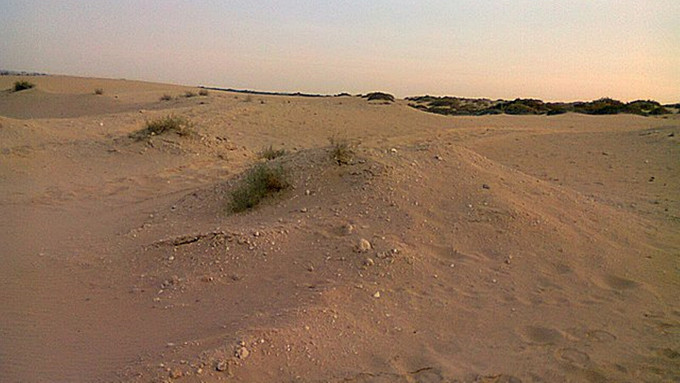Here’s what makes Saudi Arabia’s Rub’al Khali desert one of the most inhospitable places on Earth
Imagine a vast expanse of sand, stretching as far as the eye can see. Welcome to the Rub’al Khali, or the Empty Quarter, the world’s largest continuous sand desert. This sun-scorched wilderness, shared by Saudi Arabia, Oman, the UAE, and Yemen, is a place of breathtaking beauty and extreme conditions.
Towering dunes, some reaching heights of 820 feet, dominate the landscape. Despite the harsh climate, the desert’s hues of red and gold create a stunning spectacle. Temperatures can soar above 50°C in summer, and drop dramatically at night. Rainfall is scarce, often less than 3 cm, making this desert one of the driest places on Earth. Yet, life finds a way, with salt-tolerant plants and desert animals thriving in this unforgiving environment.

While it remains one of the least inhabited places on Earth, its allure continues to draw explorers and researchers intrigued by its secrets.
The desert stretches over 650 kilometres. To explore this desolate landscape, travellers can embark on a journey along Saudi Arabia’s Highway 10, the world’s longest straight road. This approximately two-hour drive from Haradh to Al Batha near the UAE border offers a glimpse into the Rub’al Khali’s harsh yet mesmerising beauty.
 The Rub’al Khali is a desert of extremes—vast, remote, and harsh, yet filled with hidden beauty and a rich history. (Wikimedia commons)
The Rub’al Khali is a desert of extremes—vast, remote, and harsh, yet filled with hidden beauty and a rich history. (Wikimedia commons)
Though it was largely unexplored until the 20th century, in recent decades, several oil and gas reserves have been discovered beneath its sands, contributing to Saudi Arabia’s prominence as a leading oil producer.
The Rub’al Khali holds deep cultural and historical importance in the Arabian Peninsula. It has been home to Bedouin tribes for centuries, who navigated its vastness on camels. These nomadic groups have long relied on their deep knowledge of the desert for survival, fostering a unique culture of resilience and self-reliance.
Additionally, the desert played a key role in ancient trade routes. Frankincense caravans once traversed its expansive dunes, linking the Arabian Peninsula to distant markets in the Mediterranean and beyond.
Exploration has also revealed archaeological remains, including ancient human settlements and stone tools, suggesting that the region was once more hospitable.
The Rub’al Khali is a desert of extremes—vast, remote, and harsh, yet filled with hidden beauty and a rich history. The Empty Quarter is not only a natural wonder but a testament to the resilience of life in the most challenging of environments.
📣 For more lifestyle news, click here to join our WhatsApp Channel and also follow us on Instagram
Disclaimer: The copyright of this article belongs to the original author. Reposting this article is solely for the purpose of information dissemination and does not constitute any investment advice. If there is any infringement, please contact us immediately. We will make corrections or deletions as necessary. Thank you.
